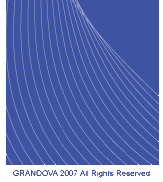GRANDOVA research group at the University
of St.-Petersburg led by Dr. Fomin work on problems related to the
efficiency of enhanced oil and gas recovery in fractured and
non-fractured reservoirs, and characterization of this kind of
reservoirs. Currently, the group consists of a number of graduate
students at MSc and PhD levels involved in different projects. The
problems we deal with can be outlined as follows:
Enhanced Embedded Data Technology (EEDT):
LEFT: Water displacing air (lighter color) by
co-current capillary imbibition at 80 C and RIGHT: Pentane (red
color) displacing mineral oil by counter-current diffusion in a
matrix, both in upward direction
- Development of mature oil fields (light-oil) through EOR
(Dilute surfactant and nitrogen injection as tertiary oil
recovery). Tertiary recovery (miscible, CO2) potential of mature
oil/heavy-oil fields.
- Modeling matrix-fracture interaction during waterflooding,
thermal (steam and hot-water), chemical (surfactants and
polymers), and miscible (solvent) injection applications in
oil/heavy-oil reservoirs.
- Optimal use of CO2 in enhanced oil recovery and sequestration.
- Heavy oil-bitumen recovery: Efficiency of SAGD, VAPEX, CSS
processes.
- Modeling fluid flow in 2-D fractal porous media.
- Understanding the mechanics of spontaneous imbibition (co- and
counter-current) of gas-liquid and liquid-liquid systems at
elevated temperatures and low interfacial tension.
- Heat, mass and volume transfers between fracture and matrix in
fractured reservoirs.
- Effect of ultrasonic waves on capillary and viscous
displacement in porous media.
- Flow of loss control and well stimulation chemicals/materials
in fractures and porous media.
- Modeling multiphase flow in a single fracture considering the
effect of surface roughness.
Viscous fingering during mineral oil displacement by
kerosene with (RIGHT) and without ultrasonic energy (LEFT)
| |
|
 |





